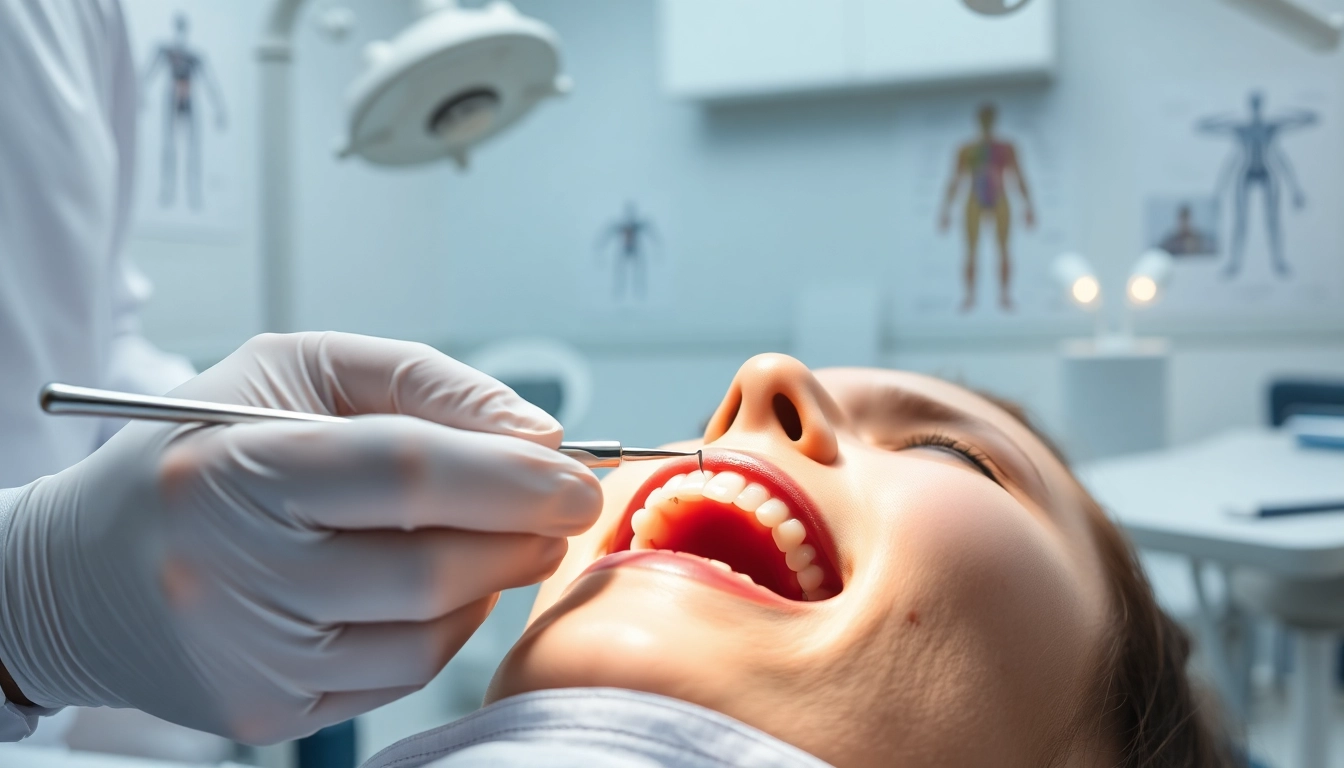Understanding Hygiene: The Basics
What Is Hygiene?
Hygiene encompasses a wide range of practices aimed at maintaining health and preventing disease, especially through cleanliness. It includes various habits, from personal grooming to food safety and environmental cleanliness. The term hygiene derives from the Greek goddess of health, Hygeia, which underscores its historical significance in health care. As we strive for better health and well-being, our understanding and implementation of hygiene practices become crucial. In addition, practicing good hygiene can enhance our quality of life, contribute to public health, and reduce healthcare costs.
The Importance of Personal Hygiene
Personal hygiene involves caring for one’s body to maintain health, prevent illness, and promote good relations in social contexts. Key aspects include regular handwashing, bathing, oral care, and grooming. The importance of personal hygiene cannot be overstated; it plays a vital role in preventing infections and illnesses. For instance, handwashing has been proven to reduce respiratory infections by up to 16% and gastrointestinal illnesses by about 30%. Moreover, good personal hygiene can impact mental well-being, as clean and well-groomed individuals often experience higher self-esteem and better relationships with others.
Factors Affecting Hygiene Practices
Several factors influence hygiene habits, including cultural beliefs, education levels, socioeconomic status, and access to clean water and sanitation facilities. For example, individuals living in urban areas may have more resources and knowledge about hygiene practices compared to those in rural settings. Economic constraints can also limit access to personal hygiene products, making it challenging for some populations to maintain basic levels of cleanliness. Additionally, cultural differences may affect perceptions of cleanliness, leading to varying hygiene practices across communities. Understanding these factors is crucial for tailoring effective hygiene education campaigns that address specific needs and challenges within diverse populations.
Types of Hygiene
Personal Hygiene: Key Practices
Personal hygiene consists of daily habits that individuals can adopt to promote their health. Some key practices include:
- Hand Hygiene: Frequent handwashing with soap and water, especially before eating and after using the restroom.
- Oral Hygiene: Regular brushing and flossing to prevent dental issues such as cavities and gum disease.
- Body Hygiene: Bathe or shower regularly to remove dirt and bacteria, reducing odor and preventing skin conditions.
- Grooming: Trimming nails, keeping hair clean, and wearing clean clothing to foster a good appearance.
These practices not only enhance physical health but also have psychological benefits, contributing to a positive self-image and social interactions.
Food Hygiene: Ensuring Safety
Food hygiene refers to the practices that ensure food safety and prevent foodborne illnesses, which affect millions of individuals each year. Key aspects of food hygiene include:
- Proper Handling: Washing hands before preparing food, cooking food thoroughly, and avoiding cross-contamination between raw and cooked foods.
- Storage: Keeping food at safe temperatures, such as refrigerating leftovers promptly and ensuring that perishable items are stored correctly.
- Cleanliness: Maintaining a clean kitchen environment, including utensils, cookware, and countertops.
By adhering to food hygiene practices, individuals can significantly reduce the risk of food-related illnesses and protect their communities.
Environmental Hygiene: Keeping Spaces Clean
Environmental hygiene focuses on creating and maintaining a clean environment, which is vital for public health. This includes sanitation practices, waste disposal, and pest control. Effective environmental hygiene involves:
- Regular Cleaning: Routine cleaning of homes, workplaces, and public spaces to minimize the risk of disease transmission.
- Waste Management: Proper disposal of waste, recycling, and reducing litter to prevent pollution and promote health.
- Pest Control: Implementing measures to control insects and rodents that can carry diseases.
These practices ensure a healthier environment, ultimately leading to improved quality of life and well-being.
Common Hygiene Challenges
Overcoming Barriers to Good Hygiene
While good hygiene practices can dramatically improve health outcomes, barriers often hinder their adoption. Common barriers include:
- Access: Limited access to clean water, sanitation facilities, and hygiene products can significantly impede hygiene practices.
- Awareness: Lack of education around hygiene importance can perpetuate poor practices, especially in underserved communities.
- Cultural Norms: Some cultures may have differing perceptions of hygiene, leading to reluctance in adopting widespread standards.
To overcome these barriers, it is imperative to create targeted interventions. Education campaigns, improved access to hygiene products, and community engagement can foster better hygiene behavior change and significantly reduce health risks.
Addressing Misinformation About Hygiene
Misinformation can lead to harmful hygiene practices. Myths about cleanliness, such as over-cleaning leading to weaker immune systems, can deter individuals from adhering to essential hygiene practices. To combat misinformation, public health organizations must provide clear, evidence-based guidelines and engage with communities to clarify misconceptions, emphasizing the importance of hygiene in disease prevention.
Hygiene and Cultural Differences
Cultural beliefs and practices can shape perceptions of hygiene. For instance, the frequency and methods of bathing can vary significantly across cultures. Understanding these variations is crucial to creating effective hygiene promotion strategies that respect cultural norms while encouraging healthier practices. Collaborative approaches that incorporate community input can lead to successful behavior change in hygiene beyond just imposing standards.
Best Practices for Maintaining Hygiene
Daily Routine for Personal Hygiene
Creating a daily routine can facilitate consistent personal hygiene practices. Here are some actionable steps to consider:
- Morning Routine: Start with brushing teeth, washing the face, and taking a shower. Use clean clothes to enhance the feeling of cleanliness.
- Mealtimes: Ensure hands are washed thoroughly before meals and after using the restroom. Use sanitized utensils and plates.
- Evening Routine: Wind down with face washing, brushing teeth, and preparing for sleep. Clean bedding can contribute to better hygiene.
Consistency in these routines creates habits that foster long-term health and well-being.
Food Safety and Hygiene Tips
Practicing food safety prevents foodborne illnesses. Here are essential food hygiene tips:
- Wash hands before and after handling food.
- Cook food to the appropriate temperatures to kill harmful bacteria.
- Separate raw and cooked foods to avoid cross-contamination.
- Store leftovers promptly and avoid keeping food at room temperature for extended periods.
Adopting these practices can drastically reduce the risk of foodborne illnesses and promote overall health.
Home Hygiene: Cleaning Strategies
Maintaining a clean home contributes significantly to individual and family health. Effective cleaning strategies include:
- Regular Cleaning Schedule: Establish a routine for cleaning various areas of the home, including kitchens, bathrooms, and living spaces.
- Use Appropriate Cleaning Supplies: Utilize disinfectants and cleaning materials that are safe and effective in eliminating germs.
- Pest Control Measures: Implement preventive measures to manage pests which can spread diseases.
Creating a clean living space not only improves physical health but also enhances mental well-being.
Measuring the Impact of Hygiene on Health
Hygiene Metrics: What to Track
Measuring hygiene practices’ effectiveness can be achieved through various metrics. Key indicators include:
- Rates of hospitalizations due to preventable infections.
- User adherence to hygiene protocols in community health initiatives.
- Improvements in community health surveys post-intervention.
Monitoring these metrics helps in evaluating the success of hygiene initiatives and directing resources effectively where needed.
Case Studies on Hygiene Practices
Case studies provide valuable insights into successful implementation of hygiene practices. Notable examples include:
- The WHO’s ‘Clean Care is Safer Care’ program highlighting hand hygiene in health care settings, leading to drastic reductions in healthcare-associated infections.
- Community-wide campaigns focused on handwashing practices that have halved the incidence of diarrhea in certain populations.
These examples shine a light on how targeted hygiene interventions can lead to significant health improvements.
The Role of Hygiene in Public Health
The role of hygiene in public health is pivotal. It lays the foundation for broader disease prevention strategies and is integral in managing health crises, such as pandemics where hygiene practices like handwashing and surface cleaning become crucial. Public health initiatives focusing on hygiene have proven successful in reducing disease transmission rates, lowering healthcare costs, and improving community health outcomes globally.



